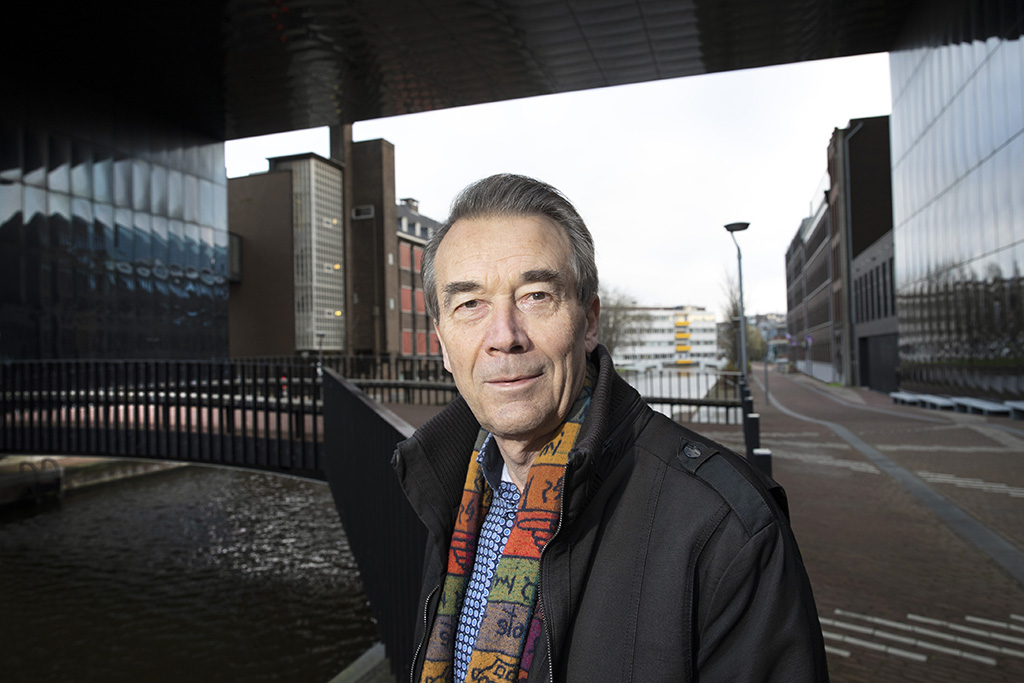Poverty in the Netherlands has increased sharply: ‘At the bottom, people have been at a standstill for decades’
Poverty appears to have been decreasing in the Netherlands for years. But the official figures give a distorted picture, according to research by Wiemer Salverda, emeritus professor of Labor Market and Inequality. People at the bottom of society have been at a standstill for decades while the rest of society has seen rapid progress. Also on the labor market.

Poverty reaches lowest level in years. Fewer working poor again. The series of reports on poverty in the Netherlands could well give cause for hope. Apparently, there is an ever-decreasing proportion of the population that has to save every penny and is on the brink of financial ruin. And yet, according to Wiemer Salverda, emeritus professor of Labor Market and Inequality at the Amsterdam Centre for Inequality Studies at the University of Amsterdam, the situation is different.
Salverda coordinated major international research into low-paid work and income inequality. His research on the labor market and income inequality in the Netherlands in recent years shows that things are certainly not going well.
Has poverty decreased? It all depends on how you look at the figures. Are you not poor if you have bread on the table and a roof over your head, or is it also important that your income rises in line with that of the rest of the population and that you can afford a mobile phone? And what if you cannot get a job anymore?
The purchasing power of poor people
“Poverty in the Netherlands has decreased dramatically in recent decades, according to the CBS. The number of people in poor households is now 1 million, down from 1.86 million in 1995. But the poverty statistics they use are out of date. For the purchasing power of poor people, the CBS looks at the 1979 welfare level, which was 11,700 guilders.
“It is arbitrary. If one were to take the situation in 1970, when the minimum wages earners were still 25% lower than in 1979, there might now hardly be any poverty in our country. In the longer term, you cannot keep on using this. People who are poor are still at the level of forty years ago. In 2019, the welfare level was 13,200 euros. While a lot has changed.
“Wages have risen, average disposable income has doubled. But not at the lower end. The minimum wage, like benefits, has fallen by 25 percent in purchasing power from 1979 until the early 1990s. Since then, purchasing power has remained unchanged. People at the bottom have become poorer and poorer in recent decades.”
Sharing in the progress of society
“That you look at what is happening in an absolute sense is certainly important. Can people pay for their basic needs because their wages go up with the prices? You have to recalibrate it regularly. After five years, after ten years. Are the statistics still representative of how the world works? The same applies to price indices, for example. You don’t put a coal stove in now, you put gas prices in.
“It’s also about whether poor people should be allowed to share in social progress. How they fare relative to the rest. Are they allowed to have a television, a computer, a mobile phone? All these things have not only become commonplace but they have also become indispensable to function in society. How else will you apply for a job, or receive your money?
Poverty in the Netherlands
What is it like to live in poverty? What does poverty look like nowadays and what can you do about it? This Christmas period, Univers pays special attention to poverty in the Netherlands. People in need of money will be interviewed as well as scientists. Together, they paint a picture of a problem which, unfortunately, is still a long way off from being solved.
This series was made possible with the help of Quiet 500, an organization dedicated to helping people in situations of poverty in the Netherlands. Do you want to help? Visit the website and see what you can do.
“This is what the European poverty statistics consider. And those look very different. CBS’s absolute poverty is halving and is indeed lower than ever since the 2019. The relative poverty? That triples to more than 2 million persons and is higher than ever. The decrease in purchasing power of the Dutch minimum wage is unique in Europe and finds its match only in the United States. The claim that poverty has decreased is based on a one-sided choice for the absolute approach.”
A hundred guilders a week
“In 1964, the social partners made a start with a minimum wage of one hundred guilders per week. That wage was supposed to be enough for an employee with a wife and two children. They could pursue an income policy like that because it was directly linked to the hourly wage. A household had one earner who worked full-time. If you had a low hourly wage, you could end up in poverty.
“If the lowest collective wages had followed the average earned wages, the minimum wage would have gone up, and so would the benefits through indexation. That’s the way it is by law. That hasn’t happened; on the contrary, it’s stagnating. Since the 1990s, the government has been pressuring collective bargaining partners to set the lowest wages at the minimum wage level, not above it. Otherwise, social spending rises enormously.”
Women and children
“That it is stagnating also has to do with developments in the labor market. Since the early 1990s, there have been many more households with both partners being highly educated. And we now have second earners and third earners. These are women and children who work in addition to the household tasks they perform or the education they receive. They have better qualifications and operate from households where there is already a substantial income, which makes the exact pay less important to them.
“It is understandable that people make other choices. The level of education has increased, and people want to be active on the labor market. If you want to work part-time and don’t want to travel too far, you quickly turn to retail and catering.
“But it distorts competition in the labor market considerably. Some 80% of low-paid work is part-time, and most of that is done by better-educated people, from households with higher incomes. This leads to a radically different relationship between pay and poverty.
“There are an awful lot of jobs for young people of only six hours a week. All in all, that’s a lot. The Netherlands is very different from other countries. When young people work there, they are not in education, they work full time. While we have a lot of overlap with schoolchildren and students who have a job as shelf stackers, or in service in a cafe.”
Competing as a household
“The less educated are the ones to pay the price. They are being pushed out. As an individual, you compete on the labor market against the background of your household. As a household with several earners, you quickly find yourself at the top of the income distribution.
“But the number of households where both people have a low education has fallen dramatically. At the lower end, it has become harder to get a suitable income, and a house. It has also become harder to live on one wage. As a single earner, you cannot afford to work part-time.
“Most people like to work. It gives meaning to your life, social contacts, and structure. But the less educated often don’t find work. They don’t get the chance. The lower end is stagnating while the rest is growing. They see other households drastically improving. The gap is widening, and little attention is paid to it. It’s the market-driven policy requiring people to figure things out for themselves. That the labor market will sort it out for them. That is not the case, it has not been for thirty years.”
Inevitable choices
“You might have hoped that the pandemic would have highlighted how important work in shops, hospitality, and care is. But nothing is happening in the area of wage formation. The lower educated are lagging behind while the employment of the higher educated is already at a higher level compared to before the pandemic.
“Raising the minimum wage and thus also benefits is indispensable for fighting poverty. But at the same time, such an increase is more beneficial to higher incomes because they do a lot of low-paid work. That makes it difficult: there is no button you can press somewhere, after which everything changes.
“Politicians need to realize that these mechanisms are at work. Plot a path of how, in the next ten years, the minimum wage and benefits will get a boost, to get people closer to the general welfare trend. Provide perspective.
“People who fall into poverty while working get tax refunds in the United States. I think that’s inevitable here too. But it doesn’t just have to be money. More affordable social housing, for example, could also be part of the solution. And you could think of a basic income for children. Free public transport, sports, and other facilities. So that you untangle their position from what their parents can achieve.”







